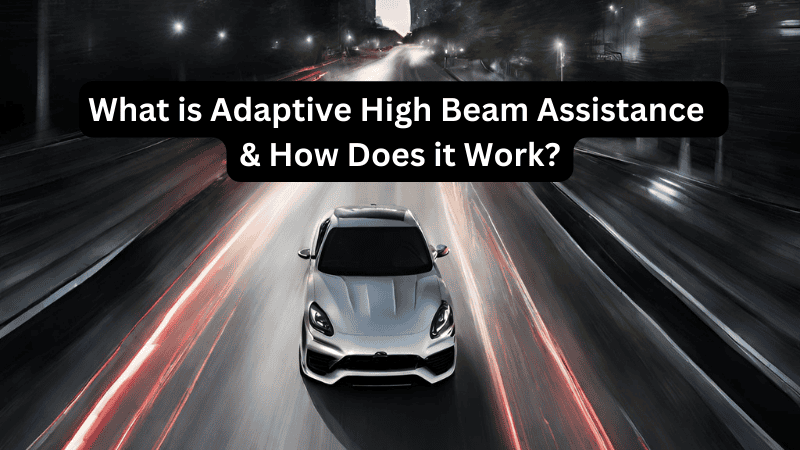Listen up, night drivers! Do you constantly switch between high beams and low beams while driving in the dark? This happens because you care for the safety of other drivers, but you don’t want to miss out on road vision with a low beam.
Well, what if we told you there’s a smarter way to handle this situation? Yes, there is a smarter way, and that’s called adaptive high beam assistance.
We know you’re thinking: What is Adaptive High Beam Assistance and how does it work? Let’s dive in to find the answers along with the benefits and limitations of this feature.
What is Adaptive High Beam Assistance?
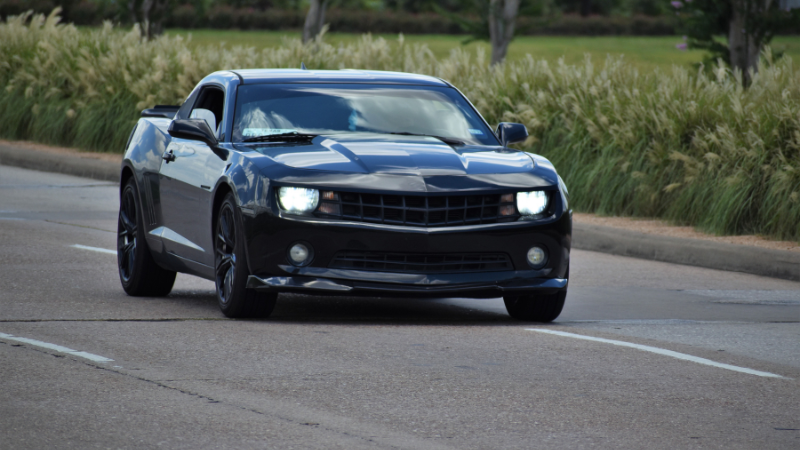
Adaptive High Beam Assistance, or AHBA, is a smart feature in some modern cars designed to automatically control your vehicle’s headlight beams, providing optimal lighting without blinding other drivers on the road.
It uses a combination of sensors, cameras, and software to detect oncoming vehicles or vehicles ahead and adjust the headlight beams accordingly.
Imagine you’re driving in the dark, and your car’s headlights are on the brightest setting to help you see far ahead.
Normally, if another car comes toward you, you’d have to manually switch to a lower light setting so you don’t dazzle the other driver with your bright lights. But with Adaptive High Beam Assistance, the car does this automatically.
How Adaptive High Beam Assistance Works
Here’s a detailed look at how Adaptive High Beam Assistance works in modern vehicles:
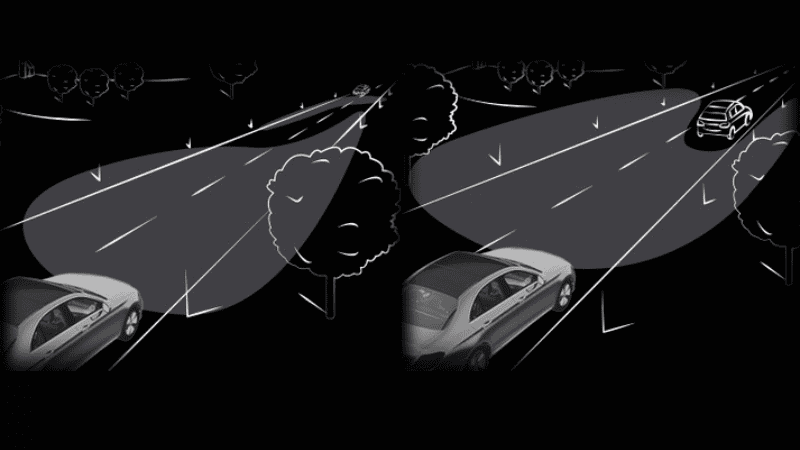
AHBA system has a sophisticated forward-facing camera sensor, usually mounted behind the vehicle’s rearview mirror.
This sensor acts as your car’s eyes, scanning the darkness for light sources such as headlights of the oncoming vehicle, taillights of the cars ahead, and even scattered light sources that brighten the road.
However, you have to remember that the High Beam Assist system activates only when the vehicle surpasses a certain speed threshold. Specifically, it starts functioning at speeds around 19 miles per hour or 30 kilometers per hour or higher.
Upon detecting the light, the system instantly calculates the optimal light distribution needed. It then controls the headlight beams to adjust their intensity, direction, and coverage, ensuring that you have a good view of the road without creating glare for other drivers.
This happens in milliseconds so that you don’t even notice it.
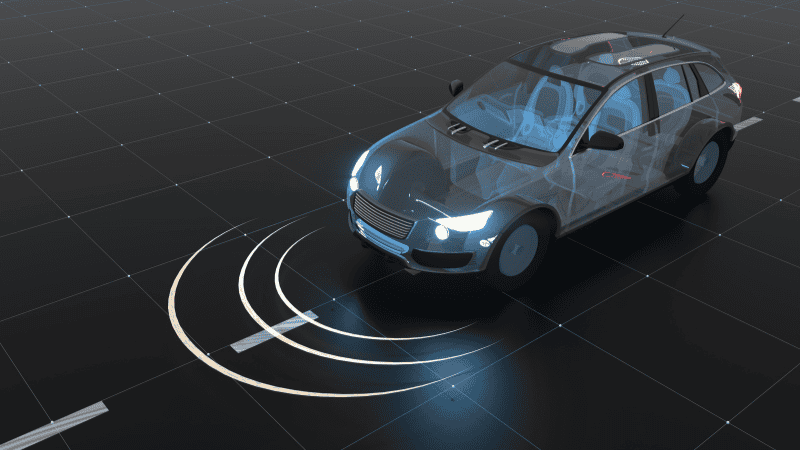
In some new high-end cars like Lexus and Mercedes-Benz, you get an advanced version of the Adaptive High Beam Assistance known as the Two-Stage Adaptive High-Beam System. This innovative feature takes the concept of headlight control to a new level.
Here’s how it works: the headlamps are equipped with 24 independent LED chips arranged in two rows, which can be individually turned on and off. This allows for exceptionally precise control over which areas of the road are illuminated and which are not.
For example, if there’s a car in front of you, the system can dim the lights specifically around that vehicle, avoiding glare for the other driver, while still keeping the road signs above or around brightly lit.
This targeted approach ensures optimal visibility for you without compromising the safety or comfort of other road users.
Benefits of Adaptive High Beam Assistance
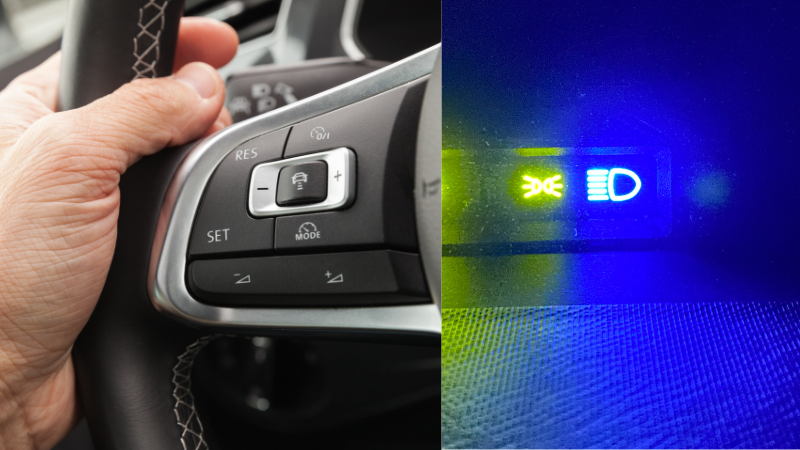
Here are the top benefits of having Adaptive High Beam Assistance in your vehicle:
1. Enhanced Nighttime Visibility
As mentioned earlier, Adaptive High Beam Assist boosts your visibility at night in a smart way. It automatically adjusts your headlights, making it easier for you to see far ahead and spot dangers sooner.
This means you get a clearer view of the road without constantly switching between high and low beams manually.
2. Increased Safety for All Road Users
Next up is the overall road safety. AHBA technology lowers the chances of accidents happening because drivers are temporarily blinded.
This is because AHBA dims your vehicle’s headlights when it detects oncoming traffic or when you’re coming up behind another vehicle. This action prevents the kind of glare that might confuse or disorient other drivers.
3. Stress Reduction for the Driver
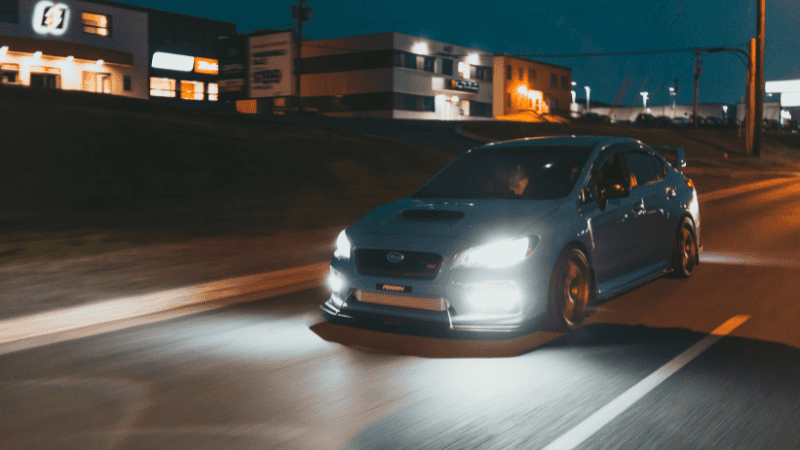
Nighttime driving, particularly on busy roads or in areas without street lighting, can be a stressful experience. In such situations, constantly switching between high and low beams can divert the driver’s attention away from the road.
AHBA takes over this task, allowing the driver to remain focused on navigating the road ahead. As a result, it leads to a more relaxed and stress-free driving experience.
4. Improved Reaction Time
This is another important benefit of AHBA. Since it adjusts the headlights for you, you don’t have to worry about switching them back and forth, which means you can focus more on the road.
When you can see clearly and don’t have to mess with the lights, you can quickly notice and react to things like obstacles, sharp turns, or sudden stops.
5. Compatibility with Future Technologies

AHBA isn’t just a single feature working on its own. Instead, it’s like a team player in a group of car safety technologies.
It works smoothly together with other helpful systems, such as automatic stopping when something is in the way, helping keep the car in its lane, and spotting pedestrians.
As cars get smarter and more advanced, you can expect AHBA to come on board and work seamlessly with other safety features.
Challenges and Limitations of Adaptive High Beam Assistance
Despite the clear benefits of Adaptive High Beam Assistance, several challenges and limitations need to be considered. Here are some of them:
- Limited Availability: AHBA is mostly found in luxury vehicles, making it less accessible to the average driver. This exclusivity means that the safety and convenience benefits of adaptive headlights are not yet standard across all vehicle markets.
- Visibility Range Limitations: While it is true that AHBA increases the driver’s visibility at night by adjusting the headlight beams dynamically, still, you still can’t ignore the fact that this technology has its limits. The enhanced visibility range it provides does not equate to infinite visibility. There are still boundaries to how far and how well the system can illuminate the road ahead.
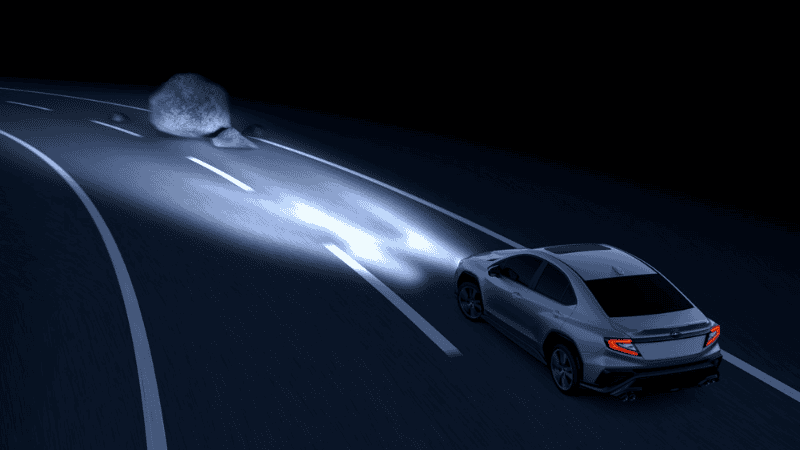
- Lack of Obstacle Alert: The system’s primary function is to manage the headlight intensity and direction without dazzling oncoming drivers. However, it isn’t designed to alert drivers to nearby obstacles or potential hazards on the road. This means reliance on AHBA alone for night driving safety is not advisable without additional systems designed for hazard detection.
- False Sense of Security in Cornering at High Speed: Adaptive headlights improve visibility on corners at night, but do not make high-speed cornering inherently safer. Drivers may misinterpret the better illumination as an ability to safely drive at higher speeds around bends. It’s essential to adhere to speed limits and reduce speed based on road conditions, irrespective of the improved visibility.
- Risk Compensation Behavior: There is a concern that drivers might engage in risk compensation behavior, feeling overly confident in their vehicle’s safety features. AHBA and other Advanced Driver Assistance Systems (ADAS) could lead to drivers taking greater risks, like speeding, assuming that their vehicle’s technology will protect them from potential accidents.
Future of Automotive Lighting and AHBA
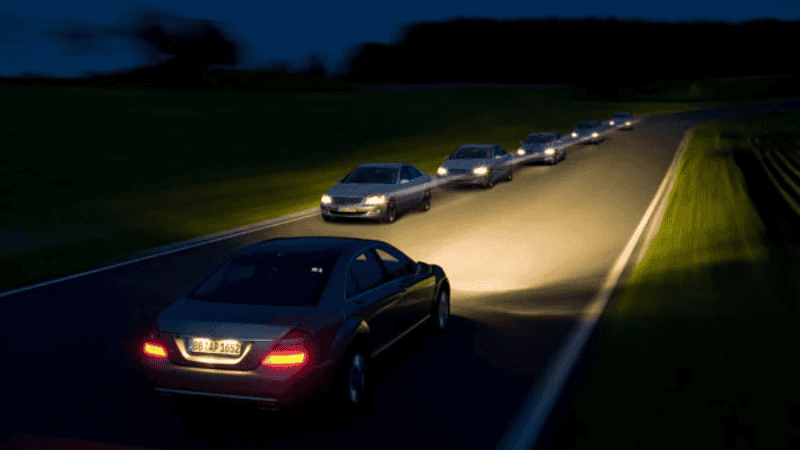
The trend toward adopting Adaptive Driving Beam headlights has been gaining momentum over the past five years, showing a significant shift in vehicle installation.
By 2021, the number of vehicles equipped with standard ADB headlights surpassed those with optional installations for the first time.
Fast forward to 2023, and the adoption of ADB headlights has soared, being installed in over 1.5 million vehicles. This reflects the growing demand for advanced automotive lighting solutions and highlights how vehicle headlights are evolving far beyond their traditional role.
Nowadays, headlights are not just about lighting the road; they have become multifunctional tools that enhance intelligent driving assistance, foster interaction, and even offer entertainment features.
Looking ahead, the role of Artificial Intelligence (AI) in automotive lighting, particularly AHBA, is likely to grow. AI technology could enable real-time analysis of road conditions and optimize the headlight beams‘ intensity and direction accordingly.
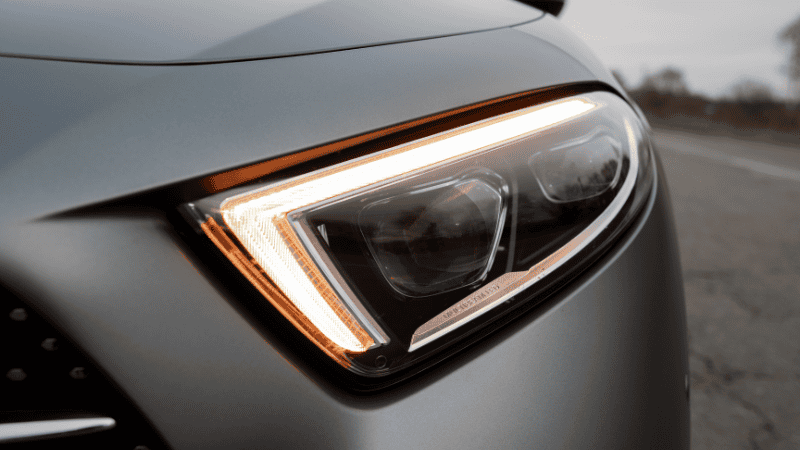
For example, if a pedestrian suddenly crosses the street in front of the vehicle, AI-powered AHBA could detect this and quickly adjust the headlights to avoid blinding or distracting them.
In addition, advancements in LED and laser technologies are likely to improve the capabilities and efficiency of AHBA. With more precise and powerful headlight beams, AHBA may be able to extend its visibility headlamp range further, making night driving even safer.
Conclusion
So, this was a detailed guide about Adaptive High Beam Assistance, its benefits, challenges, and the future of automotive lighting.
We tried to cover all the essential aspects of this advanced technology, and we hope it answers the question: What is Adaptive High Beam Assistance and how does it work?
It is just the beginning of a brighter future in vehicle lighting, and we can expect more innovations and advancements in automotive lighting technology to come.
Get the Taste of the Latest LED Lights by Carlightvision
Interested in upgrading your vehicle’s headlights? With over 15 years of innovation in flexible ODM/OEM manufacturing, Carlightvision specializes in designing and crafting custom headlights that set the standard in automotive lighting.
Serving over 100 headlight brands across dozens of countries, our fast lighting sample customization service ensures you get what you need. Contact us today, and speak directly to a team member with years of industry knowledge and experience!
